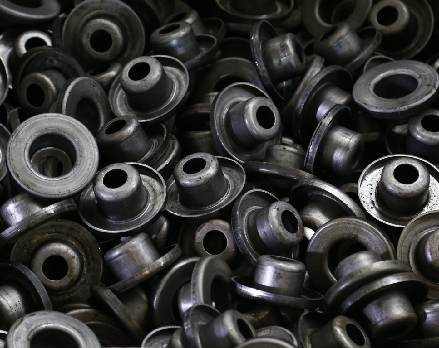 Afrikaans
Afrikaans  Albanian
Albanian  Amharic
Amharic  Arabic
Arabic  Armenian
Armenian  Azerbaijani
Azerbaijani  Basque
Basque  Belarusian
Belarusian  Bengali
Bengali  Bosnian
Bosnian  Bulgarian
Bulgarian  Catalan
Catalan  Cebuano
Cebuano  Corsican
Corsican  Croatian
Croatian  Czech
Czech  Danish
Danish  Dutch
Dutch  English
English  Esperanto
Esperanto  Estonian
Estonian  Finnish
Finnish  French
French  Frisian
Frisian  Galician
Galician  Georgian
Georgian  German
German  Greek
Greek  Gujarati
Gujarati  Haitian Creole
Haitian Creole  hausa
hausa  hawaiian
hawaiian  Hebrew
Hebrew  Hindi
Hindi  Miao
Miao  Hungarian
Hungarian  Icelandic
Icelandic  igbo
igbo  Indonesian
Indonesian  irish
irish  Italian
Italian  Japanese
Japanese  Javanese
Javanese  Kannada
Kannada  kazakh
kazakh  Khmer
Khmer  Rwandese
Rwandese  Korean
Korean  Kurdish
Kurdish  Kyrgyz
Kyrgyz  Lao
Lao  Latin
Latin  Latvian
Latvian  Lithuanian
Lithuanian  Luxembourgish
Luxembourgish  Macedonian
Macedonian  Malgashi
Malgashi  Malay
Malay  Malayalam
Malayalam  Maltese
Maltese  Maori
Maori  Marathi
Marathi  Mongolian
Mongolian  Myanmar
Myanmar  Nepali
Nepali  Norwegian
Norwegian  Norwegian
Norwegian  Occitan
Occitan  Pashto
Pashto  Persian
Persian  Polish
Polish  Portuguese
Portuguese  Punjabi
Punjabi  Romanian
Romanian  Russian
Russian  Samoan
Samoan  Scottish Gaelic
Scottish Gaelic  Serbian
Serbian  Sesotho
Sesotho  Shona
Shona  Sindhi
Sindhi  Sinhala
Sinhala  Slovak
Slovak  Slovenian
Slovenian  Somali
Somali  Spanish
Spanish  Sundanese
Sundanese  Swahili
Swahili  Swedish
Swedish  Tagalog
Tagalog  Tajik
Tajik  Tamil
Tamil  Tatar
Tatar  Telugu
Telugu  Thai
Thai  Turkish
Turkish  Turkmen
Turkmen  Ukrainian
Ukrainian  Urdu
Urdu  Uighur
Uighur  Uzbek
Uzbek  Vietnamese
Vietnamese  Welsh
Welsh  Bantu
Bantu  Yiddish
Yiddish  Yoruba
Yoruba  Zulu
Zulu pulley rubber lagging
Understanding Pulley Rubber Lagging Enhancing Performance and Longevity
In various industrial applications, the efficiency and durability of machinery play a crucial role in operational success. One vital component that significantly contributes to this efficiency is the pulley, particularly when equipped with rubber lagging. This article explores the importance of rubber lagging on pulleys, its advantages, and the applications in which it is most beneficial.
What is Pulley Rubber Lagging?
Rubber lagging refers to the process of applying a layer of rubber to the surface of a pulley. This rubber layer serves multiple purposes it provides a better grip for the belt, reduces slippage, minimizes wear, and enhances the overall performance of the conveyor system. The rubber can vary in thickness, hardness, and texture, allowing for customization based on specific operational requirements.
Benefits of Rubber Lagging
1. Improved Traction Rubber lagging greatly enhances the traction between the pulley and the belt. This increased grip helps in preventing slippage, which can lead to decreased efficiency, increased energy consumption, and potential damage to both the pulley and the belt.
2. Wear Resistance The use of rubber lagging extends the life of the pulley. Without lagging, pulleys are prone to wear and tear due to direct contact with the belt. Rubber acts as a cushion, absorbing impacts and reducing friction, which in turn decreases the rate of wear on both components.
3. Noise Reduction Conveyor systems can be quite noisy, particularly in heavy industrial settings. Rubber lagging helps dampen the sound produced from the operation of the conveyor, resulting in a quieter work environment. This can lead to increased comfort for workers and compliance with occupational noise regulations.
pulley rubber lagging

4. Vibration Damping Rubber has excellent vibration-damping properties, which help reduce the transmission of vibrations through the pulley system. This is crucial as excessive vibrations can lead to mechanical failures or damage to sensitive equipment nearby.
5. Resistance to Chemicals and Moisture Rubber lagging can be designed to resist various chemicals and moisture, making it suitable for use in diverse environments, including those that involve corrosive substances or wet conditions. This resistance further contributes to the longevity of the pulley system.
Applications of Pulley Rubber Lagging
Rubber lagging is extensively used across many industries, including mining, manufacturing, and agriculture. In mining, where conveyors transport bulk materials over long distances, rubber lagged pulleys are essential to ensure efficient material handling and to withstand harsh conditions. Manufacturing sectors, such as food processing, also benefit from rubber lagging as it provides hygiene and cleanliness.
In agriculture, where machinery deals with diverse materials and conditions, the robust nature of rubber lagging ensures reliable performance. Moreover, industries that require high-speed conveyor belts gain significant advantages from rubber lagging, as it enables smoother transitions and reduces the mechanical stress on the system.
Conclusion
In conclusion, pulley rubber lagging is a critical enhancement that addresses several challenges within conveyor systems. By improving traction, reducing wear, and prolonging the life of mechanical components, rubber lagging not only boosts operational efficiency but also contributes to cost savings over time. As industries continue to evolve, the role of rubber lagging in maintaining optimal machinery performance will remain indispensable. Embracing this technology is a step towards achieving greater reliability and productivity in various industrial applications.
-
Revolutionizing Conveyor Reliability with Advanced Rubber Lagging PulleysNewsJul.22,2025
-
Powering Precision and Durability with Expert Manufacturers of Conveyor ComponentsNewsJul.22,2025
-
Optimizing Conveyor Systems with Advanced Conveyor AccessoriesNewsJul.22,2025
-
Maximize Conveyor Efficiency with Quality Conveyor Idler PulleysNewsJul.22,2025
-
Future-Proof Your Conveyor System with High-Performance Polyurethane RollerNewsJul.22,2025
-
Driving Efficiency Forward with Quality Idlers and RollersNewsJul.22,2025





























